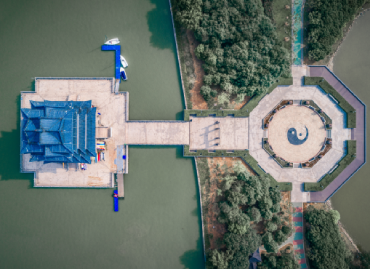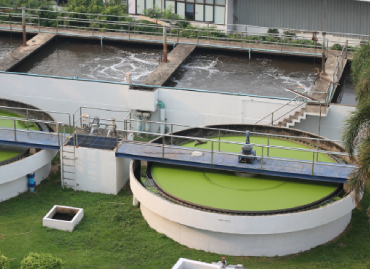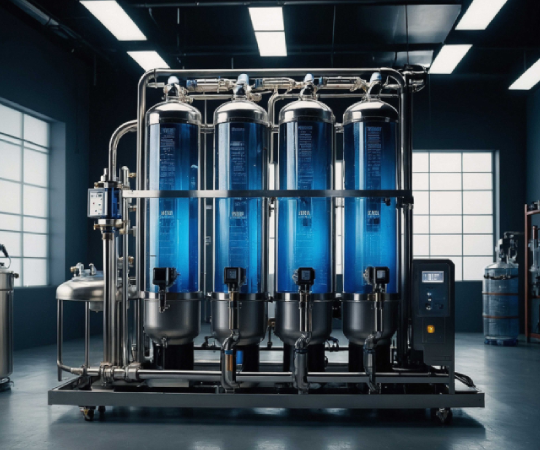- By Admin
- 18 Dec, 2024
- ETP Plant
Advanced Water and Wastewater Treatment Technologies for Sustainable Phosphate Manufacturing Operations
The phosphate industry stands as one of the most significant contributors to India's agricultural and industrial development. Fertilizers, chemicals, and detergents derived from phosphate rock support food security, industrial processes, and consumer goods. Maharashtra, home to major phosphate-processing facilities, has long been a hub for fertilizer production due to its strong industrial base and access to raw materials. Yet, behind the economic importance lies a heavy reliance on water—a resource that powers slurry transport, washing, cooling, and chemical reactions central to phosphate processing. The volume and quality of water required make efficient treatment systems an inseparable part of this industry.
In wet-process phosphoric acid production, phosphate rock reacts with sulfuric acid in aqueous conditions, producing slurry and by-products that demand substantial water input. Beyond this, washing filters, cleaning equipment, scrubbing gases, and maintaining cooling towers all consume large quantities of water. The purity of this water directly impacts process efficiency, reaction quality, and the durability of equipment, underlining the critical role of water management.
"In phosphate industries, water is more than a utility; it is the medium of transformation. Its responsible use and careful treatment define how effectively we balance productivity with sustainability. The future of industry depends not only on innovation but also on preserving nature's most vital resource—clean and safe water."
Complex Wastewater Streams in Phosphate Industries
While water enables production, it also becomes the medium carrying pollutants from different stages of operation. Wastewater streams generated from acidulation, ore washing, scrubbing, and filtration are chemically diverse and heavily loaded with contaminants. Fluoride compounds, phosphates, sulfates, ammonia, nitrates, and even toxic heavy metals like cadmium and arsenic often enter effluent streams. These chemicals, if discharged untreated, can destroy aquatic ecosystems, reduce soil fertility, and endanger groundwater reserves.
The wastewater typically exhibits low pH, high COD, and extremely high TDS levels, creating significant challenges in treatment. Furthermore, the large volume of effluent generated daily makes regulatory compliance an ongoing responsibility. For phosphate industries, addressing these challenges is not just about meeting pollution norms—it is about safeguarding their social license to operate in a world increasingly conscious of environmental stewardship.


Treatment Approaches for Phosphate Industry Effluent
Managing such complex effluent requires a layered and robust treatment strategy. Neutralization is the first step, typically achieved by adding lime or caustic soda to adjust pH levels. This prevents corrosion, improves downstream processes, and reduces the solubility of certain contaminants. Precipitation and coagulation-flocculation methods then remove phosphates, fluorides, and heavy metals by transforming them into insoluble forms that can be settled and filtered.
Sedimentation and filtration follow, enabling the removal of suspended solids and residual impurities. In many plants, activated carbon treatment is integrated to absorb organic and chemical residues. The sludge generated during treatment, often laced with toxic elements, is carefully dewatered and disposed of in compliance with environmental standards. As discharge norms grow stricter, advanced treatment technologies are being embraced to move beyond compliance toward resource recovery and water reuse.
Advanced Technologies Driving Sustainability
Phosphate industries in India are now increasingly adopting advanced water treatment solutions to reduce environmental footprints while improving efficiency. Reverse Osmosis (RO) has become central to reclaiming purified water from treated effluents, significantly cutting dependence on freshwater intake. Multi-Effect Evaporators (MEE), especially when paired with Zero Liquid Discharge (ZLD) systems, are helping industries achieve near-complete recycling of wastewater, ensuring that no untreated liquid effluent reaches the environment.
Automation and real-time monitoring have further revolutionized wastewater management in this sector. With modern control systems, plants can optimize chemical dosing, monitor water quality continuously, and prevent compliance lapses. Technologies like membrane filtration, nanofiltration, and electrochemical treatment are being deployed to specifically target fluoride and phosphate removal, making processes both precise and sustainable. These innovations ensure industries can balance high productivity with environmental responsibility.
Customized Solutions for Industry Needs
Phosphate industries face diverse challenges based on location, scale, and process design. A one-size-fits-all approach cannot solve such complexity. Tailored water and wastewater treatment solutions are essential to ensure optimal outcomes. By conducting detailed site assessments and analyzing effluent characteristics, engineers can design plants that are compact, energy-efficient, and cost-effective.
From Effluent Treatment Plants (ETPs) to Water Treatment Plants (WTPs), Reverse Osmosis systems, and ZLD setups, each solution is customized to meet regulatory standards and client goals. Beyond commissioning, long-term success depends on maintenance, upgrades, and automation, ensuring plants continue to deliver consistent results over decades of operation. When industries invest in such comprehensive solutions, they not only meet compliance requirements but also reduce risks, optimize water usage, and strengthen their sustainability credentials.
Summary And Conclusion
The phosphate industry is central to India's growth, but its survival depends on responsible water management. As operations consume and contaminate large volumes of water, advanced treatment systems are critical to reducing environmental impact. By combining neutralization, precipitation, filtration, and advanced technologies such as RO, MEE, and ZLD, industries can achieve both compliance and sustainability. Tailored solutions, real-time monitoring, and automation further enhance efficiency while reducing costs. The shift toward sustainable water practices reflects more than regulatory necessity—it is a commitment to environmental stewardship. Phosphate industries that embrace these solutions secure their future while protecting natural ecosystems.































































